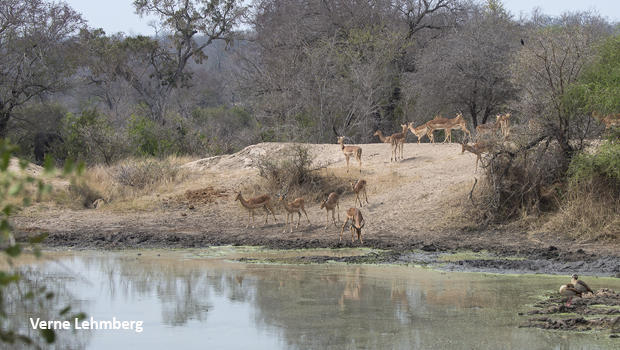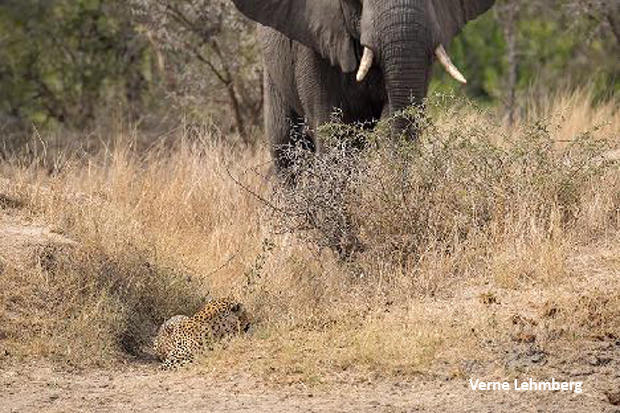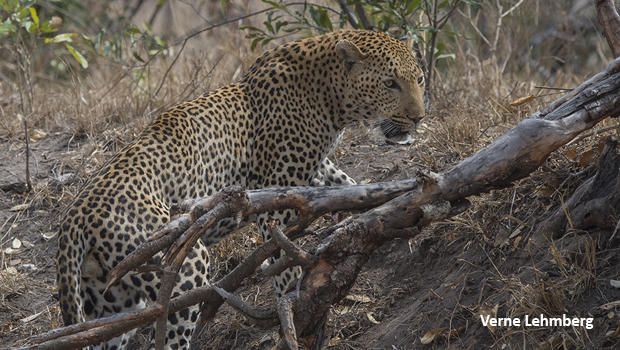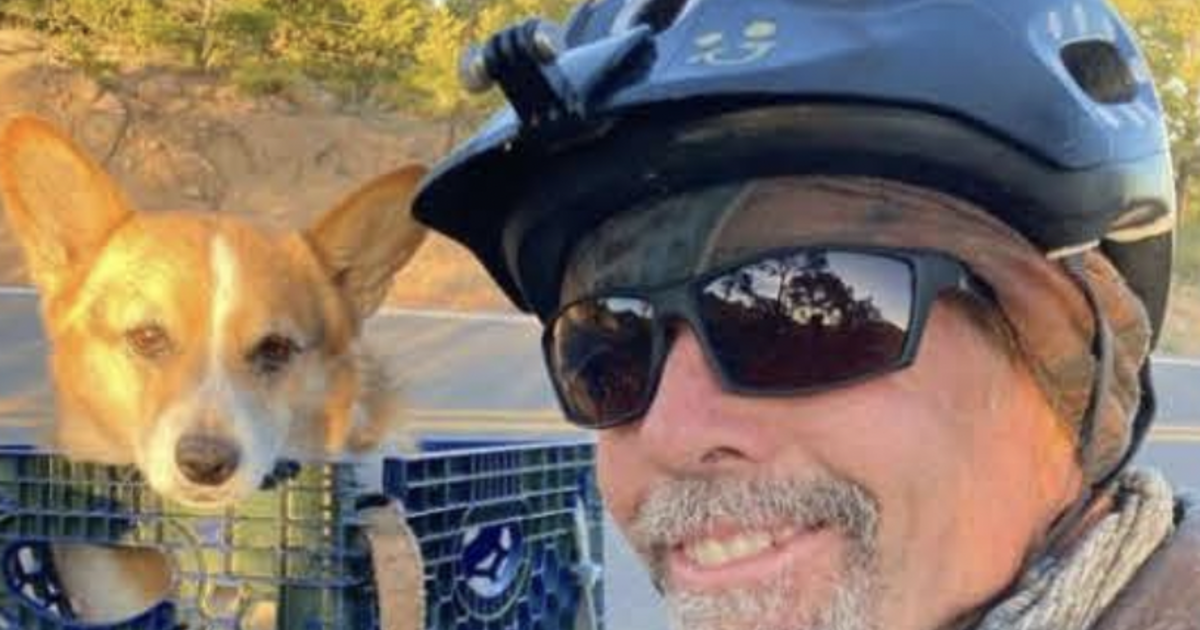Nature up close: A surprise leopard or two
Follow along as "Sunday Morning" contributing videographer Judy Lehmberg reports on her two-month trip to Kruger National Park in South Africa and to Kenya's Maasai Mara.
Filming wildlife is a lot like flying a small airplane – hours of boredom with an occasional "Oh, s***!" moment. Many years ago at the behest of my then-boyfriend, now-husband, I learned to fly his Piper Cherokee 140. My instructor had been taught by a really loud, pushy former WWII pilot who didn't put up with any foolishness and yelled a lot; he, meanwhile, was purposefully calm, cool, and gentle.
During one lesson he had me practicing stalls. The reason to know what to do when a plane stalls is that the correct recovery method can be counterintuitive. If your plane is in a nose dive the natural reaction is to pull the nose up in an attempt to gain altitude. That is the last thing you should do (and could be the last thing you will do before dying in a fiery crash). To put a plane into a stall you pull on the yoke forcing the nose up. As the nose goes up less air flows under the wings, the plane slows down and eventually falls out of the sky. To get out of a stall you simply push the yoke forward, forcing the nose down so the wings have more air under them – the plane then speeds up and flies normally.
To begin my stall lesson, I was told to gain several thousand feet of altitude, then pull the yoke towards me to force the nose up. The plane slowed down and eventually the stall light came on. Then I pushed the yoke forward, gained some flying speed, and repeated the whole process. After a couple of stalls and recoveries I looked down and quietly asked if the ground was really supposed to be that close. I guess my instructor hadn't been watching the instruments because without a word he grabbed the yoke and crammed it forward. We recovered just fine, but did not practice any more stalls that day. A very quiet "Oh, s***!" moment!
If you watch nature shows on TV you might think traveling through a park in Africa is one lion or cheetah after another. It is not. It is zebra, nothing, giraffe, nothing, a lilac-breasted roller, nothing, another zebra, etc. Sometimes that goes on for hours, or all day.
Yesterday we sat at a waterhole waiting for a lion or a cheetah, or anything exciting. While we waited, I took photos of Egyptian geese, and even asked my husband to move the car a little so I could get the perfect angle on some turtles.
After filming the fourth turtle I looked up and had a major "Oh, s***!" moment: A male leopard had somehow materialized between two short hills directly across the small waterhole, waiting for impala to come to drink. So, we waited. too. Were we going to see a kill? How exciting!
We watched the leopard for about 45 minutes. When impala came to drink, he rose up ever so slowly to see how close they were. Evidently not close enough, so he slowly lowered himself. At one point several impala actually got on one of the hills he was hiding between. Surely they were close enough now. Nope! He never sprang up for a chase.
Then, it happened: A bull elephant came up to the waterhole from directly behind the leopard, so we saw it before the leopard did. Elephants don't appear to like any species other than elephants, but they really, really don't like leopards.
The leopard turned its head to watch the elephant approach but didn't leave until it was obvious the elephant was considering stomping on him. Then he was gone. After making sure the leopard had actually left, the elephant finally got a nice, long drink.
Just to prove that "Oh, s***!" moments can occur close together, a few minutes after we left the waterhole we almost drove past a second leopard about five feet from the car. It was traveling but it did slow down enough to look back at us.
The second leopard of the day. A rare thing indeed.
Then almost immediately after that, we had another, much less pleasant moment. We came upon a troop of baboons. Cars had slowed down to take photos of around 40 baboons eating, grooming, nursing or just relaxing. There was one large male sitting on the edge of the road facing the traffic. As we drove by at about 25 mph, he jumped at the open passenger window of our truck and hung on. Now might be a good time to mention that because we can't get out of our vehicle in Kruger we always drive with one person driving and one person in the back seat so we can both take photos or film from either side of the truck. The baboon reached into a seat devoid of humans but filled with camera equipment and one almost empty paper trash sack. He got the sack and was gone just about the time I started having a heart attack. Bet he was disappointed.
See also:
- The overlooked species
- Decisions, decisions ... lions or elephants?
- Back to Africa
- Kruger National Park feeding frenzy
- Buffalo 1, Lions 0
Judy Lehmberg is a former college biology teacher who now shoots nature videos.
For more info:
- Judy Lehmberg (Official site)
- Judy Lehmberg's YouTube Channel
To watch extended "Sunday Morning" Nature videos click here!








